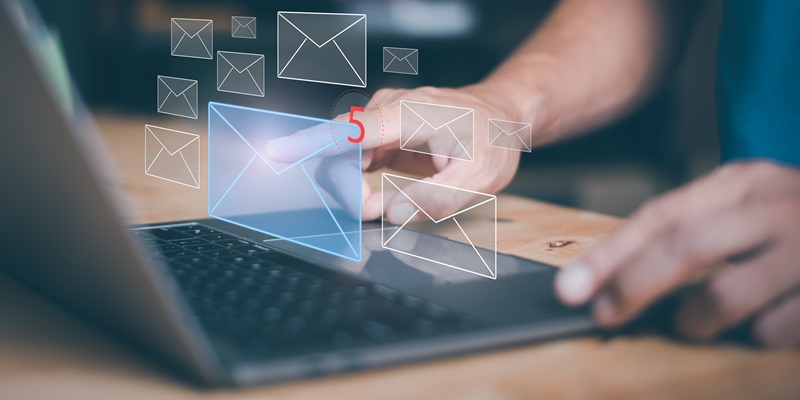Email marketing is a key strategy for nurturing customer relationships and increasing sales. To maximize its effectiveness, businesses should focus on constructing effective email funnels that guide potential customers through each stage of the buying process.
Pinpoint Your Ideal Customer Base
Identifying your ideal customer base is the cornerstone of a successful email funnel strategy. Begin by drilling down into the specifics of who your customers are—from their age and location to their interests and purchasing behavior. This deep understanding enables you to create segments based on various criteria and tailor your communication effectively.
Create customer personas that reflect the characteristics of your typical buyers. These personas guide your content creation, ensuring that every email resonates with the recipients. The clarity of your customer profiles directly correlates with the relevance and success of your email campaigns.
Sketch the Consumer’s Journey Within the Funnel
Creating an effective conversion funnel involves intricately tracing the process a prospective customer undergoes from initial discovery to final purchase. Delve into understanding every step of this journey, acknowledging the various platforms and interactions they engage with, alongside the critical factors that shape their buying choices.
This endeavor requires insight and compassion, taking into account the emotional and informational needs of customers at each phase. You should reflect on the potential hurdles that might prevent them from advancing and consider the necessary elements that could facilitate this progression.
By charting out the consumer journey with care, you foster an environment that minimizes obstacles and consistently adds value, subtly propelling the consumer toward making a purchase. A masterful customer journey map caters to the nuances of customer experience, ensuring that each touchpoint is an opportunity to influence their decision positively.
Initiate Awareness and Spark Interest
Raising awareness and generating interest are the initial steps in introducing potential customers to your brand. Effective use of multiple channels, such as social media ads, content marketing, and SEO, can drive traffic to your site and encourage email sign-ups.
Offer a strong value proposition for joining your email list. Perhaps it’s exclusive access to content, a discount on their first purchase, or the inside scoop on new products. The key is to provide a compelling reason for customers to opt into your communications.
Capture Prospects and Foster Them
Once people join your email list, the key is to actively engage and nurture them. By monitoring how they interact with your content and brand, you can gain insights into their preferences and habits. Direct them to specialized landing pages that accompany each email blast to collect valuable data on what captivates your audience.
At this stage, your goal is to foster trust and position your brand as an expert in the field. Supply your subscribers with relevant and valuable content, ensure communications are tailored to their needs, and guide them smoothly toward the next steps in their relationship with your company.
Remember to centralize on delivering content that assists subscribers in solving problems or enhancing their knowledge. Regularly analyze the performance of your emails to refine your strategy and ensure you’re consistently meeting the needs of your audience. Focus on crafting a narrative where your brand plays a key role in helping subscribers achieve their goals. This way, you not only keep them engaged but also convert them into loyal customers and advocates for your brand. The nurturing phase is a delicate balance of providing value and encouraging action, leading to a fruitful association with your subscribers.
Transform Leads into Paying Customers
Turning leads into customers is where your nurturing efforts pay off. Implement strategic incentives such as limited-time promotions, exclusive member offers, or bonuses to encourage leads to make their first purchase.
The key at this stage is to communicate the value of your offerings and create a sense of urgency. Highlight the benefits of your products or services and why they are worth the investment. A clear and compelling call to action is essential to move prospects through the funnel efficiently.
Maintain Customer Relationships and Promote Brand Loyalty
Upon finalizing a sale, the journey towards cultivating customer loyalty begins. This phase revolves around creating retention strategies that compensate customers for their continued patronage, thus reinforcing their commitment to your brand. The essence of these programs is to not just meet but surpass customer expectations, nurturing a sense of value and appreciation within them.
Actively seeking and incorporating customer feedback is critical to this process, as it helps tailor your service to better align with consumer desires. The role of customer testimonials and peer recommendations cannot be overstated, with these organic endorsements serving as compelling advocates for your brand’s growth. Engaging with your customers in a manner that encourages them to share positive experiences will result in a robust, loyal customer base that is essential for sustained business success.
Rekindle Interest Among Inactive Subscribers
Inevitably, some subscribers will become disengaged over time. This is your chance to win back their interest with targeted re-engagement campaigns. Tailor these messages to address the reasons they may have disengaged in the first place and invite them back with a unique proposition.
By staying attuned to your audience’s changing interests and being proactive in your re-engagement efforts, you can minimize list churn and cement a strong foundation of active, engaged subscribers.
By meticulously following these steps, businesses can develop email funnels that not only resonate with their audience but also drive measurable results. Email marketing, when executed with precision and insight, can be the difference between a passive subscriber list and a dynamic, revenue-generating community.

